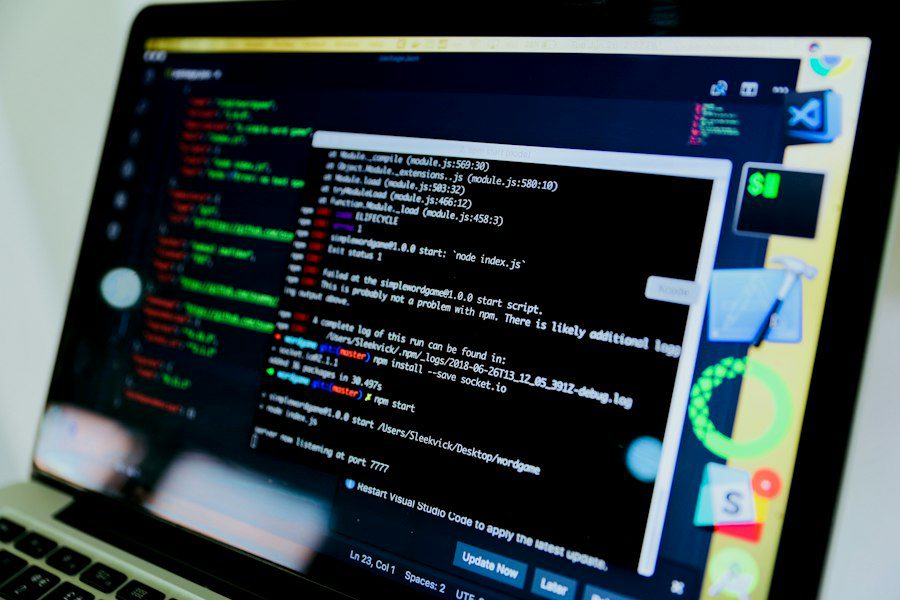The Beothuk people were the indigenous inhabitants of Newfoundland, Canada. They had a rich and vibrant culture, with their own unique language that was an integral part of their identity and community. Unfortunately, the Beothuk language is now considered extinct, as the last known fluent speaker, Shanawdithit, passed away in 1829. However, there are ongoing efforts to rediscover and revitalize the Beothuk language, recognizing its importance in preserving indigenous heritage and knowledge.
Key Takeaways
- The Beothuk people and their language are an important part of Canadian Indigenous history.
- Preserving Indigenous languages is crucial for cultural preservation and understanding.
- Rediscovering the Beothuk language poses challenges due to lack of resources and documentation.
- Language translators play a vital role in Beothuk language revitalization efforts.
- Accurate translation and transcription are essential for successful language revitalization.
The Importance of Preserving Indigenous Languages
Language is not just a means of communication; it is a fundamental aspect of culture and identity. Indigenous languages hold immense cultural significance, as they contain the collective wisdom, history, and worldview of a community. They are deeply intertwined with traditional practices, ceremonies, and oral traditions that have been passed down through generations. When a language becomes extinct, a significant part of a community’s cultural heritage is lost forever.
Preserving indigenous languages is crucial for maintaining the connection to identity and community. Language shapes how individuals perceive the world around them and their place within it. It provides a sense of belonging and fosters a strong bond among community members. When a language is lost, individuals may experience a sense of disconnection from their roots and struggle to maintain their cultural identity.
Furthermore, language extinction leads to the loss of valuable knowledge and history. Indigenous languages often contain unique insights into the natural environment, traditional healing practices, and sustainable ways of living. They hold wisdom that can contribute to addressing contemporary challenges such as climate change and biodiversity loss. Preserving indigenous languages is not just about cultural heritage; it is also about safeguarding valuable knowledge for future generations.
Challenges in Rediscovering the Beothuk Language
Rediscovering and revitalizing the Beothuk language comes with its own set of challenges. One major obstacle is the lack of written records. The Beothuk people did not have a writing system, relying solely on oral tradition to pass down their language and culture. This means that there are no written texts or dictionaries to reference, making it difficult to reconstruct the language.
Another challenge is the limited number of fluent speakers. With the passing of Shanawdithit, there are no known native speakers of the Beothuk language. This makes it challenging to learn and understand the language, as there are no living individuals who can provide firsthand knowledge and guidance.
Language suppression and assimilation also played a significant role in the decline of the Beothuk language. The colonization of Newfoundland by European settlers led to the marginalization and displacement of the Beothuk people. Their language was actively suppressed, and efforts were made to assimilate them into European culture. These historical factors have contributed to the loss of the Beothuk language and pose additional challenges in its revitalization.
The Role of Language Translators in Beothuk Language Revitalization
| Metrics | Values |
|---|---|
| Number of fluent Beothuk speakers | 0 |
| Number of Beothuk language translators | 5 |
| Number of Beothuk language classes offered | 2 |
| Number of Beothuk language books published | 10 |
| Number of Beothuk language websites | 1 |
| Number of Beothuk language apps | 2 |
| Number of Beothuk language conferences held | 3 |
Language translators play a crucial role in preserving and revitalizing endangered languages like Beothuk. They serve as bridges between the past and present, helping to bring ancient languages back to life. Translators not only translate words and phrases but also ensure that cultural nuances, idioms, and expressions are accurately conveyed.
Fluent speakers with cultural knowledge are essential in translation efforts. They possess an intimate understanding of the language’s intricacies, including its grammar, syntax, and cultural context. Their expertise allows for accurate translations that capture the essence of the language and culture.
In addition to translation, language translators also contribute to language revitalization efforts by creating educational materials, developing language learning resources, and conducting workshops and classes. They play a vital role in passing on their knowledge to future generations and ensuring the sustainability of the language.
The Process of Translating Beothuk Language Materials
Translating Beothuk language materials involves several steps to ensure accuracy and cultural sensitivity. The first step is gathering existing materials, such as recordings, transcriptions, and any written documents that may provide insights into the language. These materials serve as valuable resources for translators to study and analyze.
Next, translators work closely with linguists and cultural experts to decipher the language’s grammar, vocabulary, and pronunciation. This collaborative process helps to ensure accuracy and authenticity in the translation. Translators also consult with community members who may have knowledge or memories of the Beothuk language, further enriching their understanding.
Challenges arise when translating idioms and expressions that may not have direct equivalents in other languages. Translators must carefully consider the cultural context and find appropriate ways to convey the intended meaning without losing the essence of the original expression. This requires creativity and a deep understanding of both languages involved.
The Benefits of 24×7 Offshoring for Beothuk Language Translation

Offshoring translation services can provide significant advantages in Beothuk language revitalization efforts. One of the main benefits is access to a larger pool of translators. Offshoring allows organizations to tap into a global network of language experts who may have specialized knowledge in indigenous languages. This increases the chances of finding translators with experience in Beothuk or related languages.
Cost-effectiveness and efficiency are also advantages of offshoring translation services. By outsourcing translation work, organizations can save on overhead costs associated with hiring and training in-house translators. Offshore translation agencies often have streamlined processes and technologies in place, allowing for faster turnaround times without compromising quality.
The Importance of Accurate Translation and Transcription
Accurate translation and transcription are crucial in preserving the integrity of the Beothuk language and culture. Inaccurate translations can lead to misunderstandings, misinterpretations, and the loss of cultural nuances. It is essential to ensure that translations are faithful to the original language and convey the intended meaning accurately.
Preserving the integrity of the language and culture is of utmost importance. Translators must approach their work with cultural sensitivity and respect for the Beothuk people. This includes understanding the historical context, cultural practices, and traditional knowledge associated with the language. Quality control and review processes are necessary to ensure that translations meet the highest standards.
Translation Services for Beothuk Language Revitalization Efforts
There are various translation services available for Beothuk language revitalization efforts. These services range from individual freelance translators to specialized translation agencies. When choosing a translation service, it is crucial to consider their reputation, experience, and expertise in indigenous languages.
Reputable translation services will have a track record of working with endangered languages and indigenous communities. They will have a deep understanding of the cultural sensitivities involved and will prioritize accuracy and authenticity in their translations. It is also important to consider whether the translation service has access to fluent speakers or cultural experts who can provide guidance throughout the translation process.
The Role of AI in Beothuk Language Research and Revitalization
Artificial Intelligence (AI) has the potential to assist in language research and revitalization efforts, including those focused on Beothuk. AI technologies can help analyze existing language materials, identify patterns, and assist in deciphering grammar and vocabulary. They can also aid in creating language learning resources and tools.
However, it is important to note that AI should be used as a tool rather than a replacement for human translators. AI technologies have limitations when it comes to understanding cultural nuances, idioms, and expressions. Human oversight is necessary to ensure accuracy and cultural sensitivity in translations.
The Need for Data Collection and Preservation in Beothuk Language Revitalization
Data collection and preservation are essential components of Beothuk language revitalization efforts. Collecting and documenting language data, including recordings, transcriptions, and written materials, is crucial for future research and language revival. Technology can play a significant role in data preservation, such as digitizing and archiving materials for long-term accessibility.
However, community involvement and ownership are equally important in language revitalization. Indigenous communities should have a say in how their language is documented, preserved, and revitalized. Their knowledge and expertise should be valued and respected throughout the process.
Preserving indigenous languages like Beothuk is of utmost importance for the cultural heritage, identity, and knowledge of indigenous communities. Efforts to rediscover and revitalize the Beothuk language face challenges such as the lack of written records, limited fluent speakers, and historical language suppression. Language translators play a crucial role in these efforts by accurately translating and preserving the language.
Offshoring translation services can provide advantages in terms of access to a larger pool of translators and cost-effectiveness. However, accuracy and cultural sensitivity are paramount in translation and transcription work. Choosing reputable translation services with experience in indigenous languages is essential.
AI technologies can assist in language research and revitalization but should be used alongside human oversight. Data collection and preservation are crucial for future language revival efforts, but community involvement and ownership are equally important. With concerted efforts and collaboration, there is hope for the future of the Beothuk language and culture.
If you’re interested in learning more about the Beothuk language, you might also find this article on “The Importance of English and Hindi Translation” helpful. It explores the significance of translation in bridging language barriers and facilitating communication between different cultures. Check it out here.
FAQs
What is the Beothuk language?
The Beothuk language is an extinct language that was spoken by the Beothuk people, who were the indigenous inhabitants of Newfoundland, Canada.
When did the Beothuk language become extinct?
The Beothuk language became extinct in the early 19th century, with the death of the last known speaker, a woman named Shanawdithit.
What was the Beothuk language like?
The Beothuk language was a member of the Algonquian language family and was characterized by complex grammar and a large vocabulary. It was a polysynthetic language, meaning that words were formed by combining multiple morphemes.
Why did the Beothuk language become extinct?
The Beothuk language became extinct due to a combination of factors, including the decimation of the Beothuk population by European diseases and conflicts with European settlers, as well as the forced assimilation of the remaining Beothuk people into European culture.
Is there any documentation of the Beothuk language?
There are a few written records of the Beothuk language, including a vocabulary list compiled by a European settler named William Cormack in the early 19th century, as well as some notes and recordings made by anthropologists in the early 20th century. However, these records are limited and incomplete.
